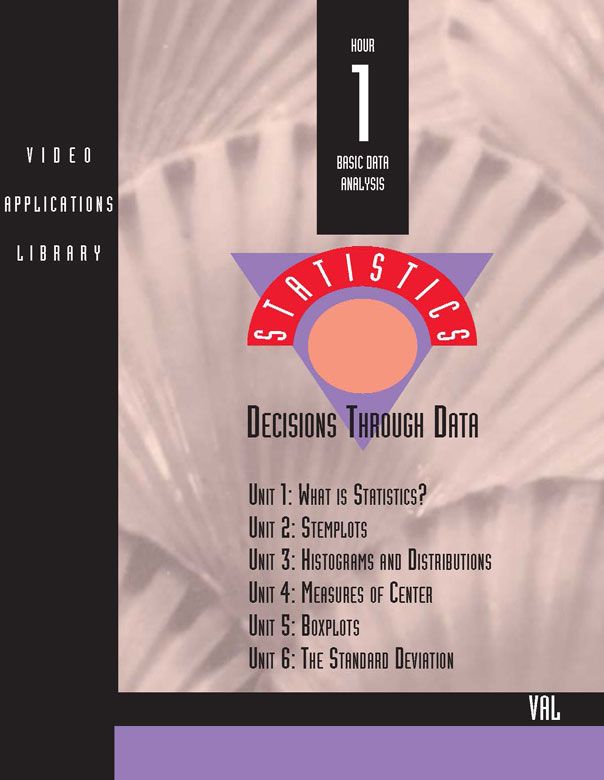Statistics: Decisions Through Data: Unit 4 Measures of Center
Author: COMAP, Text by David S. Moore
Statistics: Decisions Through Data is an introductory statistics course that unravels the statistical arguments behind surveys, polls, experiments, and product claims. Each episode begins with a documentary segment that engages students' interest, and then teaches skills to gather data, analyze patterns, and draw conclusions about real-world issues.
Unit 4: Measures of Center (11:42)
Summary of the Video
The documentary story that motivates the statistical content concerns the pay of male and female workers. Equal pay for the same work is the law, but on the average women employed full-time earn (as of 1991) only 74% as much as men. Part of the difference is due to the fact that many women have left the labor force for some period of time and so are less experienced and less senior than men, almost all of whom have been in the labor force their entire adult lives. But part of the difference is also due to the fact that some occupations are largely male and others are largely female. “Comparable worth” is the movement to secure equal pay for work of similar “value,” even though the jobs are quite different.
The video displays histograms of the distributions of female and male earnings, noting that both are skewed to the right. A numerical comparison requires a measure of the center of a distribution. The median is introduced as the midpoint, with half the observations greater and half smaller. The median male wage is higher than the median for women. We then move to Colorado Springs, where clerical workers won pay parity with maintenance workers through the comparable worth argument supported by data.
On-screen graphics present the recipe for calculating the median. Arrange the observations in increasing order, then use a specific rule for “counting halfway up” the ordered list. Then we meet the mean, the familiar arithmetic average, usually called xbar. An important contrast between these two measures is that the mean is strongly influenced by one or a few extreme observations, while the median is not. The midpoint and the arithmetic average are two different ideas which need not give similar numerical values. The mean is farther out toward the long tail of a skewed distribution than is the median. But mean and median agree if a distribution is symmetric.
Video support materials are available as part of COMAP full membership. Each video is accompanied by instructor’s notes, student exercises, group activities and quizzes.

Mathematics Topics:
Application Areas:
Prerequisites:
You must have a Full Membership to download this resource.
If you're already a member, login here.